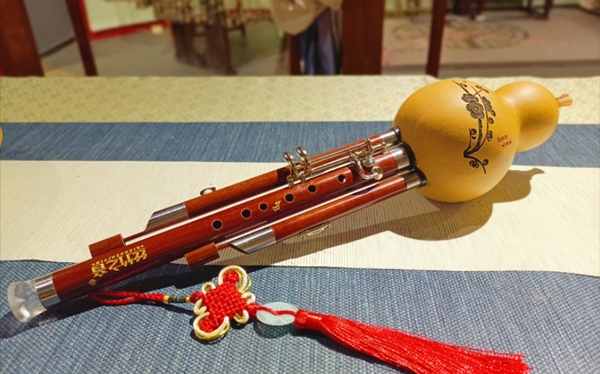Mastering the technique of playing gourd silk to effectively avoid the generation and solution of "gu" sound
During the performance of Hulusi, sometimes an disharmonious sound - "gu" sound may appear. This kind of sound not only disrupts the coherence and beauty of the music, but also affects the overall performance effect. Therefore, understanding the reasons for its occurrence and learning how to effectively avoid and solve the problem of "gu" sound is crucial for improving the performance level of hulusi.

Cause analysis
The sound of "gu" mainly comes from the following situations:
1. Improper breath control: When playing, the breath is too strong or insufficient, causing the airflow to impact the spring plate with inappropriate force, resulting in noise.
2. Incorrect mouth shape and damper setting: The dampers formed by the upper and lower lips are too large or too small, or the position of the dampers is unstable, making it difficult for the breath to evenly act on the spring.
3. Fingering problem: Inaccurate or inappropriate tightness of finger pressing holes, resulting in insufficient vibration of the spring, or air leakage and noise caused by multiple sound holes opening simultaneously.
4. Problems with the instrument itself: such as damage or deformation of the reed of the gourd silk, or impurities inside the tube body, can all lead to the occurrence of "gu" sound.
Solution strategy
For the above reasons, we can take the following measures to avoid and solve the "gu" sound problem of gourd silk:
1. Practice good breath application: Use abdominal breathing to ensure stable and long-lasting breath, and avoid excessive or weak breath. Especially pay attention to lowering the air pressure when playing low notes and increasing the air pressure appropriately when playing high notes.
2. Standardize the blowing mouth shape: maintain the correct contact method of the blowing mouth, that is, lightly touch the edge of the blowing mouth with the lips to form a moderate air door, ensuring smooth and concentrated breath flow.
3. Accurate mastery of fingering: Repeatedly practice basic fingering to ensure that each note is played accurately with fingers in place, tightly covering the sound hole to avoid air leakage.
4. Regular maintenance of musical instruments: Regularly inspect and clean the gourd string to ensure that the spring is intact and there are no foreign objects inside the tube that affect the sound quality. If necessary, professional personnel should be consulted for debugging and repair.
In short, overcoming the "gu" sound problem during the performance of hulusi requires patient and meticulous training, as well as persistent efforts. By improving the use of breath, standardizing the mouth shape of playing, accurately mastering finger techniques, and properly maintaining the instrument, every gourd silk enthusiast can gradually eliminate this problem, thereby presenting a more pure and beautiful sound during performance.
 渝公网安备 50010702504639号
渝公网安备 50010702504639号